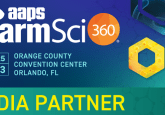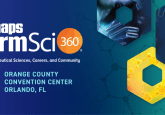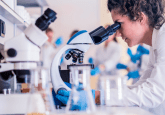AAPS PharmSci 360 2019: editor highlights

The AAPS PharmSci360 conference was held in San Antonio (TX, USA) from 3–6 November 2019. The conference aims to advance pharmaceutical sciences hosting updates, sessions and community events. The Bioanalysis and Bioanalysis Zone team both attended and, in this report, share their key highlights from the conference.
Day 1
Introduction to innovative bioanalytical solutions and the future of bioanalysis for biomolecules
The bioanalytical session on 4 November 2019 began with an introductory prologue from Binodh DeSilva (Bristol-Myers Squibb; NJ, USA). Starting by reminiscing of a time before we could even spell ‘ligand binding assay’, DeSilva discussed a wide range of bioanalytical techniques and factors for those in the industry to consider as the field continues to progress into the future. In particular, as the range of what we are capable of measuring has increased dramatically over the years, it is important to know exactly what it is we are measuring, so that we can accurately inform other industries (e.g., pharmaceutical companies), as it is our responsibility to share the correct data with them. Next, the importance of understanding trends in data analysis in order to share the data effectively was discussed. To conclude, DeSilva considered the role of automation and regulators in the industry.
Advanced bioanalysis to evaluate how immunogenicity impacts drug pharmacokinetics
In this session, Roland Staack (Roche; Penzberg, Germany) explained how antidrug antibodies against therapeutic proteins lead to the creation of immune complexes, which can impact the pharmacokinetics of a drug. In order to measure this impact, we require bioanalytical techniques that are capable of defining the characteristics of immune complexes, however, current methods have limitations. Staack demonstrated this by presenting data from previous studies and critically reviewing the methods used for each. Staack then went on to present the novel analytical solution developed in response to what was learnt from these reviews, which combines size exclusion chromatography with ligand binding assays. One highlight of this method is there is no need for a label, which was an issue previously faced in such PK studies.
Shaping the future of bioanalysis: from innovation to implementation
Kevin Bateman (Merck and Co., Inc; PA, USA) presented his keynote speech, which was divided into three sections, discussing protein quantification, patient-centric sampling and improving sensitivity of assays. Section 1 started with a discussion of bottom-up and top-down protein quantification, as well as concerns with using surrogate proteins in analysis and challenges with mass spectrometry of intact proteins. This concluded with the thought that triple quadrupole approaches will continue to dominate mass spectrometry-based approaches for protein quantification. However, middle-down approaches may still provide improvements on a case-by-case basis.
“Bateman concluded his fascinating keynote speech with the comment that we need to remember to focus on what is important to measure, not what is easy.”
Section 2 introduced the idea of ‘smart trials.’ Such trials were created in response to a need for accurate data during a PK study with migraine sufferers. Focusing on sampling techniques from participants, two pilot studies were discussed that involved at home finger-stick tests. However, due to the inaccuracies reported in these data, and in response to questionnaires completed by the participants, the Tasso Hemolink product was developed. This takes almost painless capillary blood samples from patients, negating the need for the at home finger-stick tests. The data presented on this method also demonstrated how there was no bias in these samples compared with finger-stick or venous blood samples.
Section 3 discussed how the sensitivity of assays has plateaued since 2012. Bateman described the challenge he set his team in 2017 to rectify this stasis. In response, two projects were born. One demonstrated how mobile phase additives (specifically to the use of propionic acid) can increase sensitivity, the other covered the impact of multiple transmissions.
Finally, Bateman discussed the novel technique of acoustic droplet sampling coupled with mass spectrometry. Liquid is pumped into a probe and drawn up through a tube, creating a vortex. Droplets of the sample are then shot through the vortex into the mass spectrometer. The benefits of this unique method include no concern regarding stability due to the speed and no carryover. Bateman concluded his fascinating keynote speech with the comment that we need to remember to focus on what is important to measure, not what is easy.
Day 2
RNAi therapeutic development on liver specific targeting
On 5 November 2019, Ju Liu (Alnylam Pharmaceuticals; MA, USA) ended the ‘end-to-end hot topics’ session with her presentation. This began by explaining how undesirable gene expression can be reduced through mRNA knockdown, which consequently reduces the concentration of pathogenic proteins. She then went on to describe how her team have developed a tri-GALNAc ligand to deliver drugs specifically to the liver. The data presented demonstrated a range of plasma concentrations and how the affinity of this ligand to liver cells compared to mono-GALNAc and di-GALNAc, concluding tri-GALNAc was the best option for drug delivery.
Women in pharmaceutical sciences: strategies to avoid falling off the glass cliff
“Zaveri’s final comment to the audience was that, in her experience, to avoid falling off the glass cliff, one must learn how to fly.”
In the afternoon, Annette Bak (AstraZeneca; Mölndal, Sweden), Anita Joshi (Genentech; CA, USA), Binodh DeSilva and Nurulain Zaveri (Astraea Therapeutics; CA, USA) presented a workshop on ‘Women in pharmaceutical sciences.’ Each presenter spoke for 10 minutes before opening to questions from participants. Bak kicked off the session with advice on how to be included in a non-inclusive environment, based on her own experiences. She emphasized how important it is to not take rejection personally, but to build core skills and look after your mental health.
Joshi spoke next on how behavior is based 30% on mindset and 70% on culture. She advised that, to change the mindset of people, you need to be comfortable with ambiguity, be able to let go of control, limit processes and be comfortable taking risks. On the other hand, to change the culture you need to create an environment where people are listened to and encouraged to speak, allow curiosity, provide incentives, hire the right skills and make change fun.
DeSilva continued the session by explaining the important difference between ‘mentors’ and ‘supporters.’ Supporters are those that put their neck on the line to help you achieve your goals, compared with mentors who give friendly advice. She concluded by saying both are necessary to help you advance to the next level in your career.
Closing the workshop, Zaveri told her story of reaching a stage in her career where she no longer had opportunities to advance. Because of this, she took the brave decision to leave a position in which she was comfortable, at the company she had worked at for many years, to start her own business. Her business, Astraea Therapeutics, has been successfully running for 10 years and Zaveri described that, although a daunting decision, through taking this risk she was able to grow. Zaveri’s final comment to the audience was that, in her experience, to avoid falling off the glass cliff, one must learn how to fly.
It was also great to attend the ‘women in pharmaceutical sciences’ networking breakfast, which highlighted how gender parity is important for both men and women in order to achieve success in the pharmaceutical field.
Day 3
Historical and current perspective of the FDA bioanalytical method validation guidance
In this session Patrick Faustino (FDA; MA, USA) discussed the basics of method validation: “Method validation is the process of demonstrating that analytical procedures are suitable for their intended use.” He explained how the 1998 draft of the BMV was based primarily on the analytical methods validation: bioavailability, bioequivalence and pharmacokinetic studies workshop, which was held at Crystal City (VA, USA) on 3–5 December 1990. The FDA and the CDER-OTR conduct bioanalytical studies to support public health and Faustino concluded by highlighting the importance of dialogue and discussion between scientists and regulatory agencies.
Evolution of neutralizing antibody (NAb) assays
As part of the biomolecular track, Haoheng Yan (FDA, MA, USA) focused on NAb assays. She explained how NAbs are a subset of antidrug antibodies and can interfere with the clinical activity of a therapeutic protein product by preventing product binding to the target, interfering with pharmaceutical activity (such as receptor ligand interaction) and preventing product cellular uptake. Yan continued to discuss how NAb assay results indicate the neutralizing potential of antidrug antibodies and explained that the two types of assays that are generally used are cell-based biologic assays and non cell-based competitive ligand binding assays.
We hope you enjoyed our conference highlights!
For a full list of upcoming conferences and events – click here





